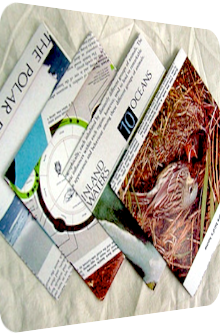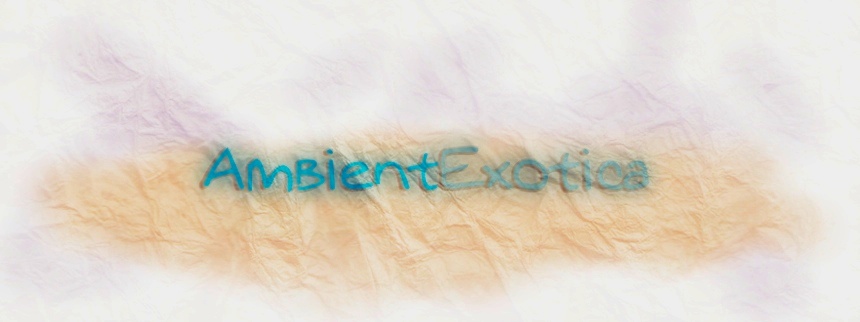
Cinchel
Nature (Part 1)
2014
After several self-released EP’s, one full-length album and multitudinous slapped strings, one has to ask: what is the morphogenesis of Cinchel’s sound cosmos? The Chicago-based guitarist, scientist and a cat’s best buddy Jason Shanley uses the Cinchel moniker to create works of the Drone genre that are sp(l)iced with the aid of glitchier fusillades. Whether it is fully fleshed out Space Ambient à la Isolation Experiments Vol 1 (2013), shadier copses that come in the shape of Quiet Nights, Lonesome Woods (2013) or plinking peninsular pericarps of aquatic proportions in Reign Water (2014), Shanley’s approach is melodious, mysterious, and as of late, either eminently erbaceous or extremely enigmatic. These forces are often intertwined on the same album, and shiver me flintwood, it is the same with Nature (Part 1), a four-track album-length EP released in November 2014 on Gavin Catling’s Perth-based Twice Removed Records. Incidentally one of the last releases to grace the label, it is released in a limited edition of 30 handstamped CD-R’s, all of them housed in recycled magazine sleeves with a postcard attached to them. Available to purchase and stream at Bandcamp, Nature (Part 1) culminates into the hybridization of Cinchel’s presumably conflictive styles, a crossbreed between organic nature and cosmic space. The junction results in a clandestine overall feel. Wolfgang Voigt’s Gas moniker comes to mind, and once this train of thought is established, it doesn’t take long for it to lead to Königsforst (1999), a simultaneously benignant and repellent thicket of discrepant rhizomes. Cinchel’s vision lacks the steady oomph of the 4/4 beat, but has its foliage and critters leave aural marks, all of which are inspected closer below.
A nebulous majesty, pompous fir-green drone aureoles, interstices hued in syringa patterns: The Forest greets the listener with a diaphanous/impermeable dichotomy. This is after all the clandestinely embroidered threads that run through the album like an oneiric superfluid. And indeed, The Forest is more akin to a solemnly floating entity than a purely layer-based cannelure. While there are aureate guitar drones injected aplenty, they only serve as the bucolic bokeh background. The actual stars, at least tonality-wise, are the portentous agglutinations, for instance the dark matter pads alloyed in senescence, the gorgeous vibraphone sparks that oscillate between fairy tale fluorescence and arcane photometry, or last but definitely not least the organ-like potassium rays whose argentine luminosity augments both the erbaceous solace and recondite appendices. Shanley’s opener therefore serves as the endemic and extrinsic blueprint by letting the antagonistic forces of magnanimous mellifluousness and nullifidian uncertainty unfold within the album. They also work as interconnecting binders to his Space Ambient works. A similar magnification process becomes apparent in the adjacent A Leaf as well, and quite literally so, as the verdured wisps gyre and shuttle freely around a warmhearted drone decortication. The music box-evoking vibraphone illuminants build up coruscation and viscidity. The timbre harbors the precise look, a meticulous gaze onto the molecular level. Encapsulated in warmth, the plinking prongs even retroject a short afterglow qua their pristine presence. Cinchel’s music is often willfully mellow and comprising of self-augmenting parallax layers. A Leaf with its hexangular scintillation, however, is a permutation of purity.
The centerpiece of the album is embodied by the aqueous serpentines of The River. Running for over 26 miles, the fibrillar flume evokes the peaceful grandeur of the opener but also introduces a helical cotyledon in the shape of Pop Ambient goodness which translates to a cajoling synth-oid seraphic ethereality. In lieu of an utterly immersive effect that is found in many a New Age artist’s work which is inspired by the same topics and concepts as Cinchel’s EP, the Chicagoan guitarist chooses a subtler, mellower approach, veneers the emptiness with beguiling vestibules and trenchantly sylvan cloudlets. To adjudge the term New Age is questionable for a variety of reasons, as The River is not a distinctive part of that genre, neither antediluvian or heavy on synth pads, nor futuristic with sprinkled cyber tropes amidst the plastic trees. The multiplexed beams of light, the longitudinal thermal balance of simmering drones, ligneous clicks and the increasingly aerose polar light lavabo that protrudes the blissful stream of spheroidal warmth altogether form a nutritious braiding of caproic equanimity. Since this state is maintained and prolonged for such a long timespan, The River becomes a benthic hydrazine: running on all cylinders, supercharged with mucoid sustenance, but devoid of any histrionic spatiality and scrimshaw decoration. Water and air are its fortes, and the same can be said about the finale Letting It Rain. Due to the title alone, comparisons with the artist’s previous work Reign Water (2014) come to mind, but the track only shares a few punctilio-oriented sentiments with the former, namely the glacial plinks of the glockenspiel; every other aspect suggests Letting It Rain to be a wonderful addendum to The River.
A gossamer incandescence, sustained camouflaged guitar chords, a rapturous circumambience, epicurean plateaus instead of undulating protuberances, Letting It Rain is the genuinely lachrymose endpoint to a spellbinding quartet of tracks that enshrine potentially conflictive forces whose opposite traits. Throughout Nature (Part 1), these entities are calcined in order to let them appear more compatible. Something’s got to give, and here it is both sides of the spectrum that are pushed over the respective threshold. The opener The Forest is the first – and only – piece to truly emanate a dubious aura, a mesmeric ignis fatuus of arcaneness not unlike the aforementioned Quiet Nights, Lonesome Woods. In the subsequent pieces, Jason Shanley delineates his viewpoint just as clearly: the Drone structures are accompanied by distantly Glitch-influenced vesicles, an earthbound heaviness is occasionally in decline only to then strike back full force. There is hardly a consensus in this regard, but I for one am still perceiving each and every new Cinchel release through Space Ambient glasses, no matter the topic, texture or title. Nature (Part 1) is obviously no spacy artifact. It’s like hailing the works of Pantera for their romance and mutual understanding. This this comparison aside, Nature (Part 1) might indeed lure admirers of that very genre, intended or not. Mystique and translucency, gaseous structures, a wonderfully synthetic afterglow of the guitar-based susurration altogether make this release a great addition to Gavin Catling’s Twice Removed Records and becomes even greater considering that this is presumably the last pillar of a label that is soon to be resurrected with a new concept. In the meantime, the question remains: when is Cinchel ready to unfurl Part 2?
Further listening and reading:
- Nature (Part 1) is available to purchase and stream at Bandcamp.
- Artist and label united on Twitter (sob, sob): @cinchel & @twiceremovedrec.
Ambient Review 388: Cinchel – Nature (Part 1) (2014). Originally published on Nov. 5, 2014 at AmbientExotica.com.
